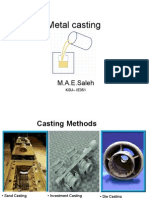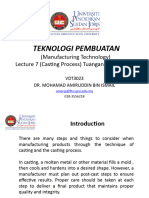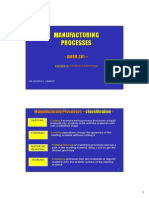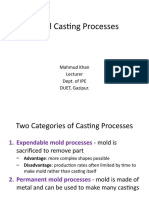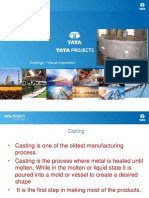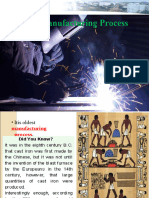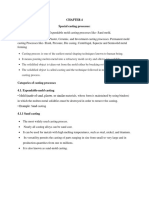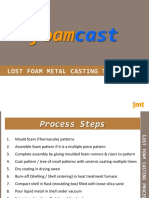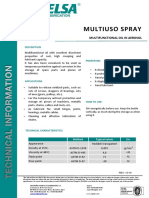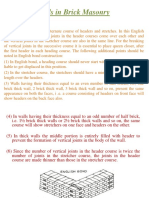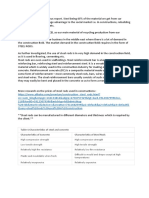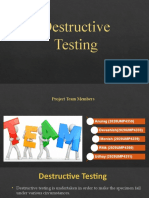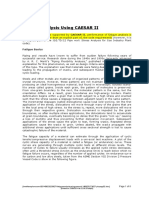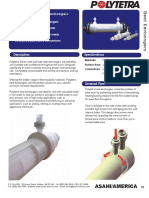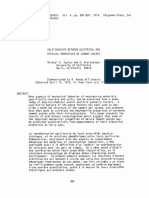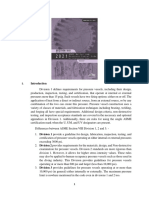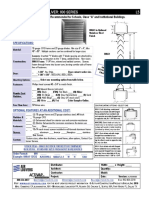0% found this document useful (0 votes)
56 views15 pagesCasting 1
This document provides an overview of metallurgy and casting processes. It discusses the global casting market and inherent characteristics of casting, such as advantages like casting intricate shapes in various sizes and quantities, as well as disadvantages from solidification like shrinkage and gas porosity. It also describes common casting processes like investment casting, sand molding, shell molding, and lost foam casting.
Uploaded by
Hoza EssamCopyright
© © All Rights Reserved
We take content rights seriously. If you suspect this is your content, claim it here.
Available Formats
Download as PPTX, PDF, TXT or read online on Scribd
0% found this document useful (0 votes)
56 views15 pagesCasting 1
This document provides an overview of metallurgy and casting processes. It discusses the global casting market and inherent characteristics of casting, such as advantages like casting intricate shapes in various sizes and quantities, as well as disadvantages from solidification like shrinkage and gas porosity. It also describes common casting processes like investment casting, sand molding, shell molding, and lost foam casting.
Uploaded by
Hoza EssamCopyright
© © All Rights Reserved
We take content rights seriously. If you suspect this is your content, claim it here.
Available Formats
Download as PPTX, PDF, TXT or read online on Scribd
/ 15






